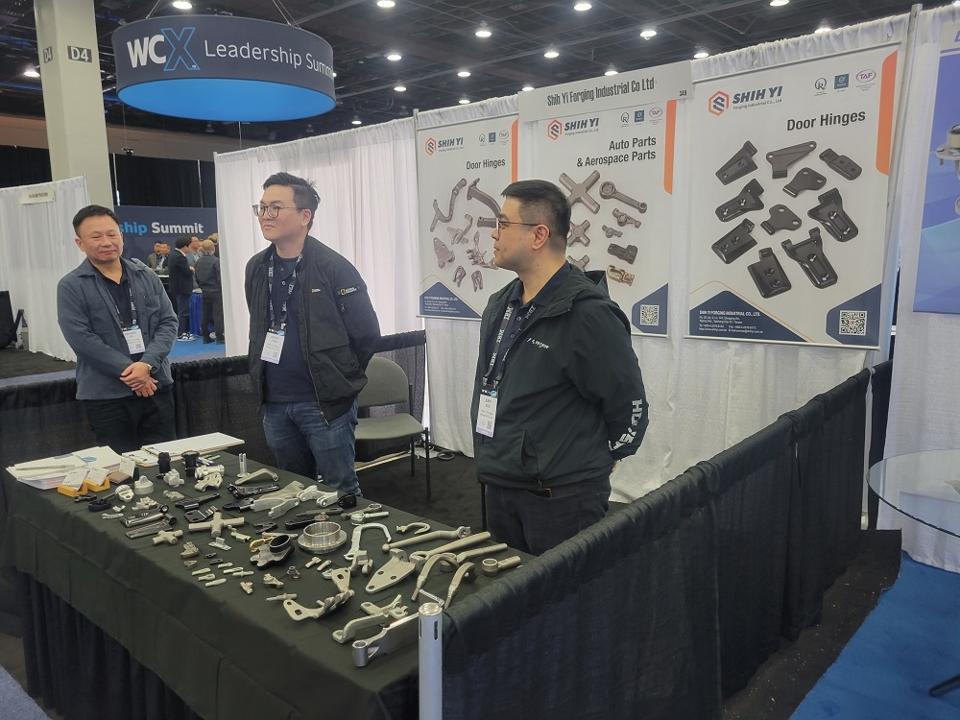All sorts of automotive parts and hardware fill the tables at the Shih Yi booth at the WCX 2025 show in downtown Detroit. It’s where automotive suppliers came this week to show off their latest products, to exchange ideas, learn and, most importantly, network in hopes of landing new business.
But President Donald Trump’s constantly changing import tariffs are creating uncertainty and fear among some of the foreign suppliers attending the show.
Trump changed course again on Wednesday, announcing a 90-day pause in reciprocal tariffs for most countries, except for China. Instead, he raised the levy on Chinese exports to the U.S. to 125% after China said it would impose additional tariffs on incoming goods from the U.S.
For Jerry Kuo, vice president of sales at Taiwan-based Shih Yi, the levies are especially troubling since, he says, 40% of his company’s business is with the U.S.
“The impact might be a little bit suffering, because our customers may come back to us and asking us to make up that margin,” said Kuo. “You may just have to refuse to take the orders from the U.S., but we don’t want to see that.”
A few rows over is the expansive Hyundai Motor Group Partners display, where more than a dozen suppliers are set up. Jin Kim, of Michigan-based JK Global Business Development represents several of them and serves as an interpreter.
He says in the case of smaller suppliers—basically companies that supply larger suppliers—Trump’s constantly changing terms are especially troubling.
“It’s not something that we can definitely say is a long term or short term,” Jin said. “Is this today and this tomorrow, and this one, you know, next week, so it’s you can’t make business decisions based on maybe a weekly moving target.”
What sounds like a simple answer, moving some production to the U.S. to avoid the tariffs, of course, is not simple at all for companies of limited resources, Jin points out. The unsatisfactory solution might just be giving up exporting to the U.S.
The tit for tat imposition of tariffs and reciprocal tariffs between the U.S. and China puts a magnifying glass over the scope of competitive threat the Chinese auto industry to the domestic companies.
“The future of the global automotive industry is being created today in China,” declared Intel Automotive vice president and general manager Jack Weast during a presentation at the WCX Wednesday on his first year in China.
In describing why the companies there are able to operate efficiently at less costs, he pointed to several key operational and cultural differences with many automakers elsewhere.
They include having just one research and development team at each company overseeing all brands, rather than R&D teams for each individual brand, an intense competitive culture and exceptionally quick communication.
To better compete with Chinese companies, Weast suggested U.S. automakers do the following:
- Take a whole vehicle systems approach
- Break down organizational silos
- Empower research and development teams and give them access to purchasing to collaborate to help lower costs
While not addressing import tariffs as a tool to attenuate competition, Weast said his personal view of what’s holding back the U.S. auto industry is “I think we’ve lost of that competitive edge. Somehow we’ve got to find that competitive spirit that used to be so alive here in Detroit, especially that made this place the most innovative place for car design.”

